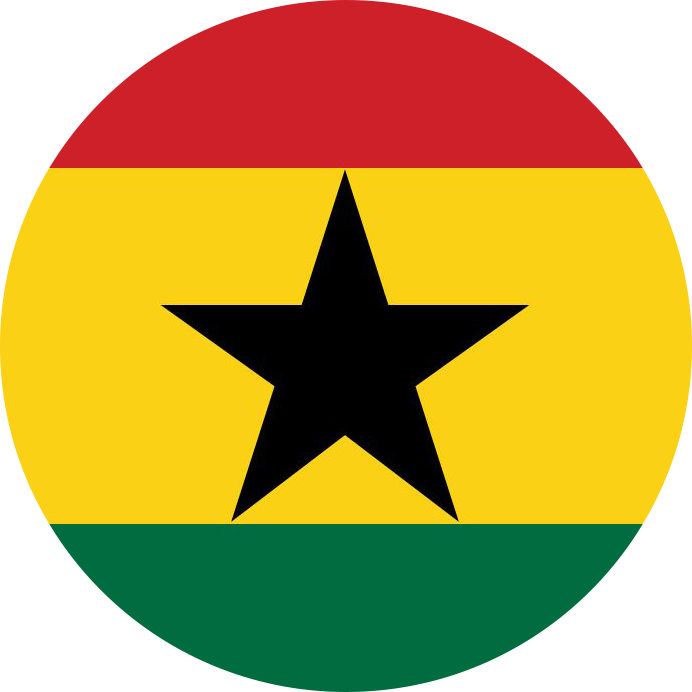Ghana offers a warm welcome and a rich mix of history, culture, and natural beauty. From colonial forts and bustling city markets to lush rainforests, waterfalls and sandy beaches, Ghana’s top attractions showcase the country’s diverse heritage. Here are 10 must-see sites across Ghana, with brief descriptions of each location and why it’s worth a visit.
1. Kakum National Park
Nestled in the Central Region, Kakum National Park preserves a vibrant tropical rainforest and unique wildlife. Its highlight is the famous treetop Canopy Walkway – a series of hanging suspension bridges 30 meters above the forest floor. From here visitors get panoramic views of the lush greenery below. Guided nature walks reveal monkeys, duikers and exotic birds along the trails. Kakum’s combination of tropical scenery, biodiversity and adventurous treetop walk make it a top destination for nature lovers in Ghana.
2. Mole National Park
In northern Ghana’s Savannah region, Mole National Park is the country’s largest wildlife reserve. Home to elephants, antelope, baboons and even lions or buffalo, Mole offers African safari experiences close to home. The park’s open savannah terrain is ideal for jeep safaris or walking tours led by rangers. Mole is also rich in birdlife (over 250 species), making it a great spot for birdwatching. Visiting during the dry season (January–March) gives the best chance to see animals gathered at waterholes. A stay at the nearby Mole Motel or camping under the stars lets tourists wake to the sounds of wildlife.
3. Cape Coast Castle (Cape Coast)
Cape Coast Castle, on Ghana’s central coast, is a 17th-century colonial fortress and a UNESCO World Heritage Site. It was a major hub of the trans-Atlantic slave trade, and its whitewashed walls and dark underground dungeons tell a powerful history. A tour of the castle takes visitors through the barracoon slave cells, Dalzel Tower, and the small museum inside. The museum’s artifacts – from colonial-era muskets to slave shackles – give insight into Ghana’s past. Overlooking the Atlantic, Cape Coast Castle stands as a moving cultural landmark and a reminder of Ghana’s historical significance.
4. Nzulezu Stilt Village
The Nzulezu Stilt Village (Western Region) is a unique community built entirely over the clear waters of Lake Tadane. Its name means “surface of the water” – fitting for a village where all the wooden homes stand on stilts. Tourists can take a dugout canoe through the calm lagoon to reach the village and meet local villagers. Guides often explain traditional life on the lake while visitors may spot crocodiles or monkeys along the water’s edge. Staying overnight on the stilted guesthouse lets travelers experience this serene riverside setting firsthand. Nzulezu’s charm lies in seeing Ghana’s rural ingenuity and waterside culture up close.
5. Lake Volta and Akosombo Dam
Located in eastern Ghana, Lake Volta is the world’s largest man-made lake. Created by the Akosombo Dam on the Volta River, the lake stretches hundreds of kilometers and covers much of eastern Ghana. Visitors can take boat rides from Akosombo to scenic Dodi Island in the lake. Fishing is popular on Lake Volta, and many lodges and resorts along the shore offer fresh-water activities. A tour of the Akosombo Dam itself provides insight into Ghana’s hydroelectric heritage. The peaceful lake views and mountain backdrop make it a relaxing stop – and a gateway to Ghana’s Volta Region adventures.
6. Wli Waterfalls
In the lush forests of the Volta Region near Hohoe, the Wli (Agumatsa) Waterfalls plunge about 80 meters down a rocky cliff. It is the highest waterfall in Ghana and West Africa combined. A well-maintained trail leads visitors through rainforests to both the Upper and Lower Falls. The hike to the Lower Falls is relatively easy (30–40 minutes) and very scenic, while the trek to the Upper Falls is longer and steeper for adventurous hikers. Visitors can swim in the pools at the base, enjoy the cool spray, and listen to the thunder of cascading water. Surrounded by verdant foliage, Wli Falls provides an unforgettable nature experience.
7. Kumasi (Ashanti Region)
Kumasi is the historic capital of the Ashanti Kingdom and Ghana’s second-largest city. Known as the “Garden City” for its tropical flora, Kumasi is also famous for its traditional crafts and markets. The Kumasi Central Market is one of West Africa’s largest open-air markets, where shoppers find gold jewelry, carved stools and colorful kente cloth. The nearby Manhyia Palace Museum offers insight into Ashanti royal history and culture. Kumasi also hosts festivals featuring drumming and dancing, reflecting the Ashanti people’s rich heritage. Its blend of city life and cultural tradition makes Kumasi a rewarding urban highlight.
8. Accra (Greater Accra Region)
As Ghana’s vibrant capital city, Accra (on the southern coast) combines modern life with historic charm. City highlights include the Makola Market, a bustling place to experience local commerce, and the Kwame Nkrumah Mausoleum (Ghana’s founding father) in central Accra. The National Museum of Ghana displays art, archeological finds and historical objects. Neighborhoods like Jamestown reveal colonial-era lighthouses and forts. Accra also has waterfront attractions – lively beaches (like Labadi), oceanfront promenades and delicious street food stands. The city’s lively streets and friendly atmosphere give travelers a warm welcome to Ghana.
9. Labadi Beach (Greater Accra)
Labadi Beach is Accra’s most popular coastal spot for sun and surf. Stretching east of the city center, Labadi Beach attracts locals and tourists alike with its lively atmosphere. On weekends the shore comes alive with music, drumming and dance performances by local artists. Visitors can ride horseback along the sand, swim in the warm Atlantic waters, or simply relax under an umbrella. Beachfront cafés and hotels serve Ghanaian specialties (like grilled fish and spicy soups) right by the waves. Labadi showcases the fun, music-loving side of Ghana’s coastal culture, making it a must-visit urban beach.
10. Kwame Nkrumah Memorial Park (Accra)
Set in downtown Accra, the Kwame Nkrumah Memorial Park honors Ghana’s first president and leader of independence. The park’s centerpiece is Nkrumah’s marble mausoleum, housing his tomb and that of his wife. Around the mausoleum, statues and monuments celebrate Ghana’s independence struggle. Inside the on-site museum, visitors see artifacts and exhibits from Nkrumah’s era, including photographs, flags and campaign materials. The landscaped gardens provide a peaceful respite in the city. This site is especially worthwhile for those interested in Ghana’s history of freedom and the charismatic leader who made it possible.
Sources: Key information for each site was drawn from Ghana tourism and travel guides, including the Ghana Tourism Authority’s official pages and well-known travel publications. These sources highlight Ghana’s attractions and provide up-to-date visitor details.
- Ghana Tourism Authority, “Cape Coast Castle – Visit Ghana”.
- TravelTriangle, “12 Amazing Places To Visit In Ghana” (travel blog).
- Afrokonnect, “Best Places to visit in Ghana – Tourist Attractions”.



